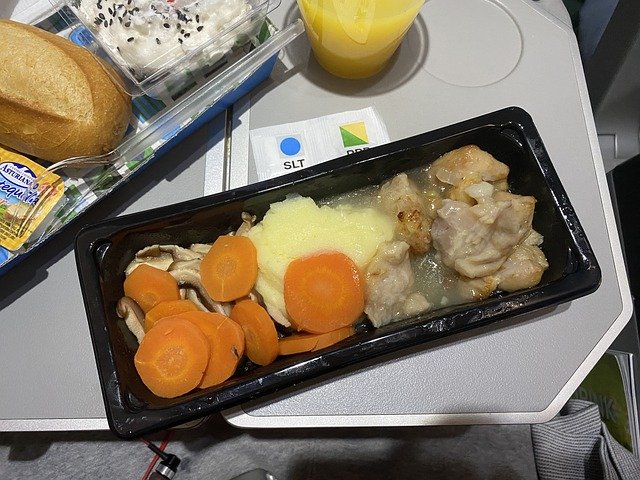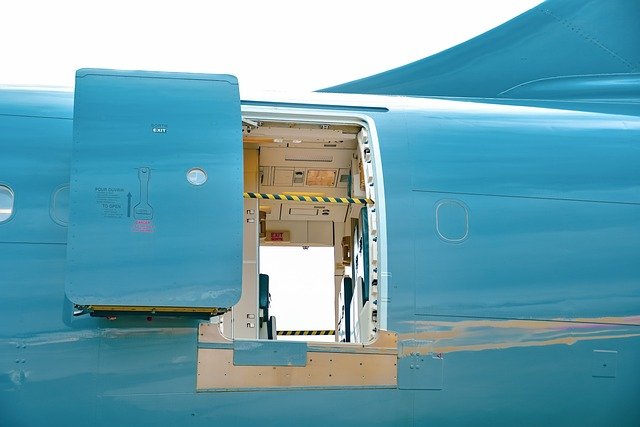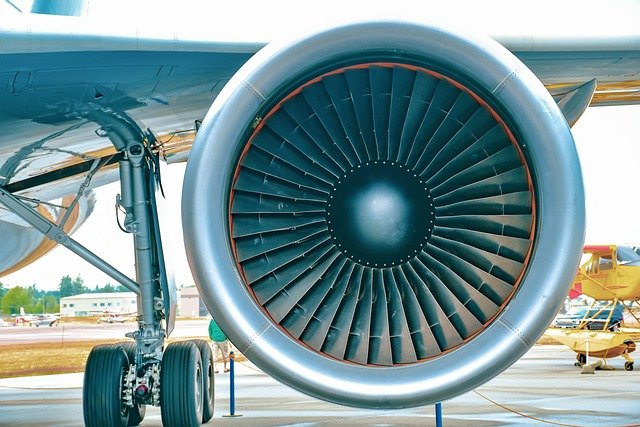List of The 13 Most Odd Things About Airplanes
1. Is the Toilet the Dirtiest Place on the Plane?
You may have heard that the lavatory on an airplane is a breeding ground for bacteria, and that statement is probably not wrong. However, it has been found that despite its location and constant use, the toilet is not the dirtiest place on an airplane.
The honor of being the dirtiest goes to the tray table, which you find right in front of you, whether it’s in the upright or down position. Eight times more bacteria were found on the tray table than on the flush button in the toilet.
A good scrub with some sanitary wipes is hopefully a no-brainer on your next flight once you’ve heard about this disgusting fact!

2. The Bizarre “Chicken Gun”
This is as strange as it sounds. At aircraft security checks, what is called a “Chicken gun” is used to ensure that all airplane windows can withstand a bird strike during flight.
The cannons shoot out, fortunately, dead birds at speeds of up to 350 km/h (220 mph).

3. During the Flight, the Pilot and Co-pilot Eat Different Meals
For safety reasons, the pilot and co-pilot usually do not eat the same types of meals during the flight. This is because, in the event that the food causes food poisoning, there should always be someone available to control the aircraft in the cockpit.
This is not a rule, but it is practiced by many airlines.
4. Is the Food Really That Bad?
The food is definitely not prepared by world-class chefs in a Michelin-starred restaurant kitchen, but in defense of all airlines, it has been proven that the dry air in the plane, combined with the low cabin pressure, significantly affects our taste buds.
According to some researchers, it can reduce our sense of taste and smell by as much as 30%.

5. A Car Uses More Gasoline Than an Airplane
A Boeing 747 uses about 4 liters, or 1 gallon, of fuel per second, which adds up to approximately 12 liters of fuel per kilometer. This may not sound like a small amount, but when considering the number of passengers (around 568 passengers), the figures look different.
A Boeing 747 uses around 12 liters of fuel to transport over 500 passengers for one kilometer. Based on this calculation released by HowStuffWorks, each passenger is transported 42 kilometers per liter, which is significantly less than a car’s fuel consumption.
6. It’s Impossible to Open the Doors During the Flight
Certainly, there has been concern that someone crazy might try to rush towards the door and open it once the aircraft has taken off, but this information may put you at ease.
Once the aircraft is up in the sky, the pressure ranges from 4-14 PSI.
This pressure makes it impossible to open the door during the flight.

7. Distance To Space
When you’re sitting in an airplane and looking out the window, it may feel like the atmosphere is close. In reality, when the plane is at its maximum altitude, it’s only 7% of the way to space.
Commercial airplanes typically cruise at an altitude of 10,000 meters (30,000 feet), but they can go higher. However, going higher poses risks to the crew and passengers due to the pressure.

8. The Safest Place to Sit on a Plane
Even though there are many factors at play in an emergency situation, and it is impossible to predict every individual plane crash, TIME conducted an analysis on the safest seat to choose on an airplane.
According to the analysis, seats in the rear third of the plane had a fatality rate of 32%, the front had 38%, and the middle had 39%.
They also discovered that the safest seat on the plane was the middle row of the rear section, with a fatality rate estimated at 28%.
The worst seats to choose were those located in the middle aisle of the middle cabin, where the fatality rate was as high as 44%.

9. Would You Fly With One Engine?
When boarding a large aircraft, you can take comfort in the fact that all planes flying longer distances must be certified by the FAA for Extended-range Twin-Engine Operations (ETOPS). This means that an aircraft must be capable of flying a certain distance with only one engine in the event that the other one fails. For example, a Boeing Dreamliner can fly for over five and a half hours with just one functioning engine.

Explore more: “17 Peculiar Facts About New Zealand”

Explore more: “17 Peculiar Facts About New Zealand”
10. Wiring Inside a Plane

It is a given that all the functions and necessities of an aircraft require wires and cables running behind the plane’s floors, walls, and ceilings.
However, the quantity, or rather the length, of all the cables is surprisingly high. A Boeing 747 has approximately 240 kilometers (150 miles) of cables!

11. Water Dehydration
In order for airplanes to fly at high altitudes, the cabin pressure needs to be maintained at around 20% humidity, which is similar to the levels found in the Sahara Desert.
This causes you to lose approximately 0.25 liters of water from your body for every hour you fly. Therefore, it is important to drink plenty of fluids before and during long flights to stay properly hydrated.
12. Turbulence Only Lowers the Altitude By a Few Meters
It’s easy to get stressed when you feel the plane starting to shake and the pilot’s voice comes over the speakers, instructing the crew to take their seats.
This may feel like the worst roller coaster ride you’ve ever been on, but the fact is that turbulence usually only lowers the plane by 3-6 meters, which is not a significant drop considering you are at an altitude of around 10,000 meters.

13. The pilot, or pilots(!) may be asleep
Lack of sleep can lead to life-threatening situations, especially when you are responsible for the lives of many. A study showed that among pilots surveyed in Norway, Sweden, and the UK, between 43% and 54% had slept during a passenger flight.
What was even more alarming was that some pilots, upon waking up from their beauty sleep, found the other pilot sleeping beside them.

Do you want to explore the waterfalls of the Philippines? Check out our article: “Top 17 Most Stunning Waterfalls in the Philippines”.